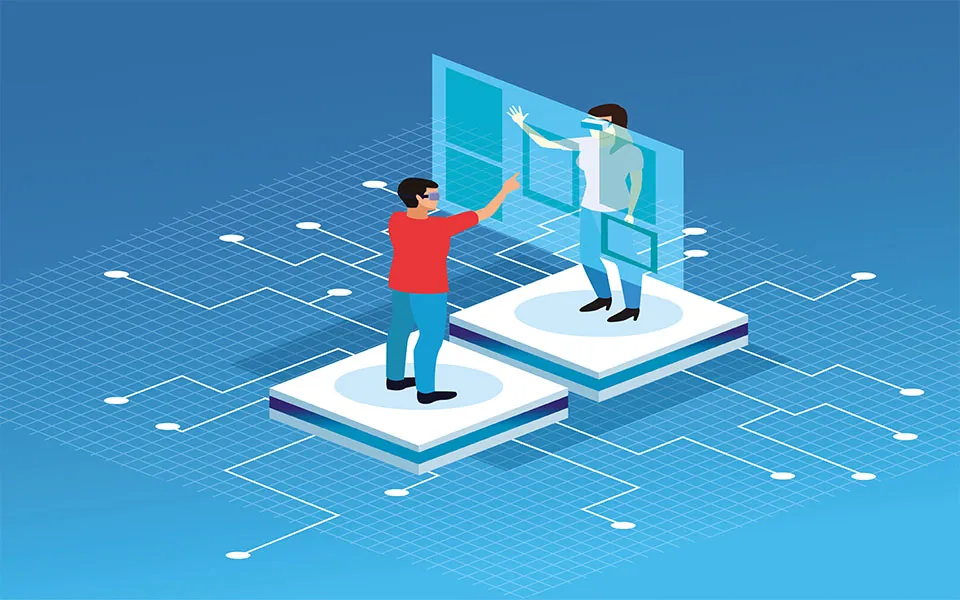Decoupling WAN and LAN Functions
In the world of telecommunications, Customer Premises Equipment (CPE) plays a pivotal role, serving as the bridge between wide area network (WAN) connections and local area networks (LAN) within households. The functions it performs are twofold:
Demarcation Point: CPE serves as the demarcation point, delineating where the access network ends and the home network begins. Various protocols, such as xDSL, GPON, Active Ethernet, or coax, terminate at this crucial juncture.
Signal Conversion: It converts incoming signals from the access network into a format that enables consumers to access communication services and distribute them throughout their homes via a LAN.

In the past decade, both WAN and LAN technologies have seen remarkable innovations. WAN technologies, offered by telcos, have evolved from analog signals over copper pairs to advanced technologies like DSL and PON. GPON connections today can deliver impressive downstream and upstream bitrates. Future PON technologies, such as XGS-PON and NG-PON2, are poised to meet bandwidth demands for years to come.
Despite WAN technologies’ relative maturity, they are not frequently updated due to substantial investments required to upgrade central office equipment. Conversely, LAN technologies have rapidly evolved, with Wi-Fi becoming predominant. However, a mismatch exists between WAN and LAN speeds, resulting in a “speed bottleneck” in networks.
Traditionally, CPE integrated the two core functions, WAN termination, and LAN distribution, into a single device known as a residential gateway (RG). This approach presented challenges whenever access network or Wi-Fi technology changed, necessitating the replacement of the entire CPE unit. This practice is cost-ineffective since the WAN module from the old device cannot be reused.
A more efficient approach involves deploying two separate pieces of equipment: a device to terminate the WAN (e.g., modem or optical network termination – ONT) and a distinct RG. This separation offers flexibility for service providers to replace RGs every 36–48 months when new Wi-Fi technology emerges, while the WAN termination device can last 5–10 years.
This model gains further support when considering emerging wireless technologies like Bluetooth, Zigbee, and Z-Wave, which require adaptable CPE. The separation of WAN and LAN components allows for more agile upgrades, ensuring compatibility with these evolving technologies.
An apt analogy is that of a car and its tires. While both are fundamental to the vehicle’s operation, consumers do not replace the entire car when the tires wear out. Instead, they replace the tires a few times during the car’s lifespan.
Horizon Powered’s advanced products, such as the 2100F12 Fixed Wireless Access (FWA) Customer Premises Equipment (CPE), are meticulously engineered to provide gigabit-speed internet access. These FWA devices leverage cutting-edge CPE technology to deliver high-speed internet services to users in geographically remote or challenging-to-reach areas.

Advantages of Decoupling or adding option to WAN and LAN:
1: Cost Savings: Separating WAN and LAN functionality lowers component costs, benefiting service providers in the long term.
2: Simplified Installation: Installing and configuring the WAN demarcation device is less intricate than setting up an RG. This reduces replacement costs associated with changing Wi-Fi technology.
3: Device Network Certification: Separation reduces the need for re-certification of WAN devices when Wi-Fi technology evolves.
4: Common Management and Support: A common RG streamlines support and reduces installation costs, especially for service providers using multiple access technologies.
- Lower Replacement Costs: Separate WAN devices are more cost-effective to replace after power surges than integrated CPE units.
- Optimal Wi-Fi Coverage: Decoupling WAN and LAN allows for flexible ONT placement, ensuring optimal Wi-Fi coverage throughout the home.
In this evolving landscape, solutions like Horizon Powered’s 2100F12 CBRS LTE outdoor CPE offer a glimpse into the future of CPE technology. By recognizing the advantages of decoupling WAN and LAN functions, service providers can embrace flexibility, cost savings, and efficiency in their networks while seamlessly adapting to emerging technologies.
Summarized Use: CPE / FWAs application and implementation
This comprehensive case study delves into a transformative partnership aimed at addressing the digital divide in underserved regions across Ohio, Illinois, Indiana, and Kentucky.
By leveraging Fixed Wireless Access (FWA) technology and Horizon Powered’s cutting-edge products like the Gigabit FWA CPE 25005G & 2400F20, this initiative aspired to provide high-speed internet connectivity to 1.4 million households and businesses by 2024.

1. The Digital Divide Challenge: In these regions, a significant population lacked access to reliable high-speed internet due to geographical remoteness, absence of traditional broadband infrastructure, and high costs. This connectivity gap adversely affected education, healthcare, and economic opportunities.
2. Partnership and Technology Selection: The Internet Service Provider (ISP) recognized FWA as a powerful solution to overcome infrastructure limitations. FWA, with its advanced features like smart beamforming and intelligent spectrum reuse, emerged as the technology of choice, capable of delivering high-capacity, low-latency connections even in challenging terrains.
3. Technical Hurdles and Mitigation Strategies: Deploying a high-speed FWA network across multiple states presented unique challenges. Meticulous planning, signal propagation optimization, and innovative beamforming technology were employed to ensure seamless connectivity, even in non-line-of-sight scenarios.
4. Comprehensive Network Deployment: Key deployment steps included site surveys, tower infrastructure utilization, installation of user-friendly CPEs, and the establishment of a robust backhaul network, ensuring reliable data transfer and low latency.
5. Quality of Service and Performance: Intelligent beamforming and interference mitigation mechanisms ensured consistently high performance. Scalability was factored in to meet future data demands.
6. Addressing Customer Needs and Service Plans: Tailored service plans, flexible data packages, and responsive customer support enhanced user satisfaction and bridged the digital gap effectively.
7. Impact on Education, Healthcare, and Economic Growth: High-speed internet had a profound impact, fostering online education, telemedicine services, and economic expansion in underserved areas.
8. Environmental Considerations: FWA’s reduced environmental impact, compared to traditional wired infrastructure, was a sustainable approach to network expansion. Using existing structures minimized disturbances to natural habitats.
9. Long-Term Sustainability and Future Prospects: The project’s success highlighted its potential for further growth and expansion. Public-private partnerships and community engagement were instrumental in ensuring sustainability.
Horizon Powered’s products like 2100F12 a Fixed Wireless Access (FWA) Customer Premises Equipment (CPE) devices are designed to deliver gigabit-speed internet access. These Fixed wireless Access (FWA) devices utilizes this cutting-edge CPE to offer high-speed internet services to end-users in remote or challenging-to-reach locations.
This initiative serves as a testament to the transformative potential of bridging the digital divide through innovative technology and strategic partnerships. It not only connected underserved communities but also left a lasting impact on education, healthcare, and economic growth. The case study sets a blueprint for other regions seeking to create a more inclusive and connected digital landscape for all.








